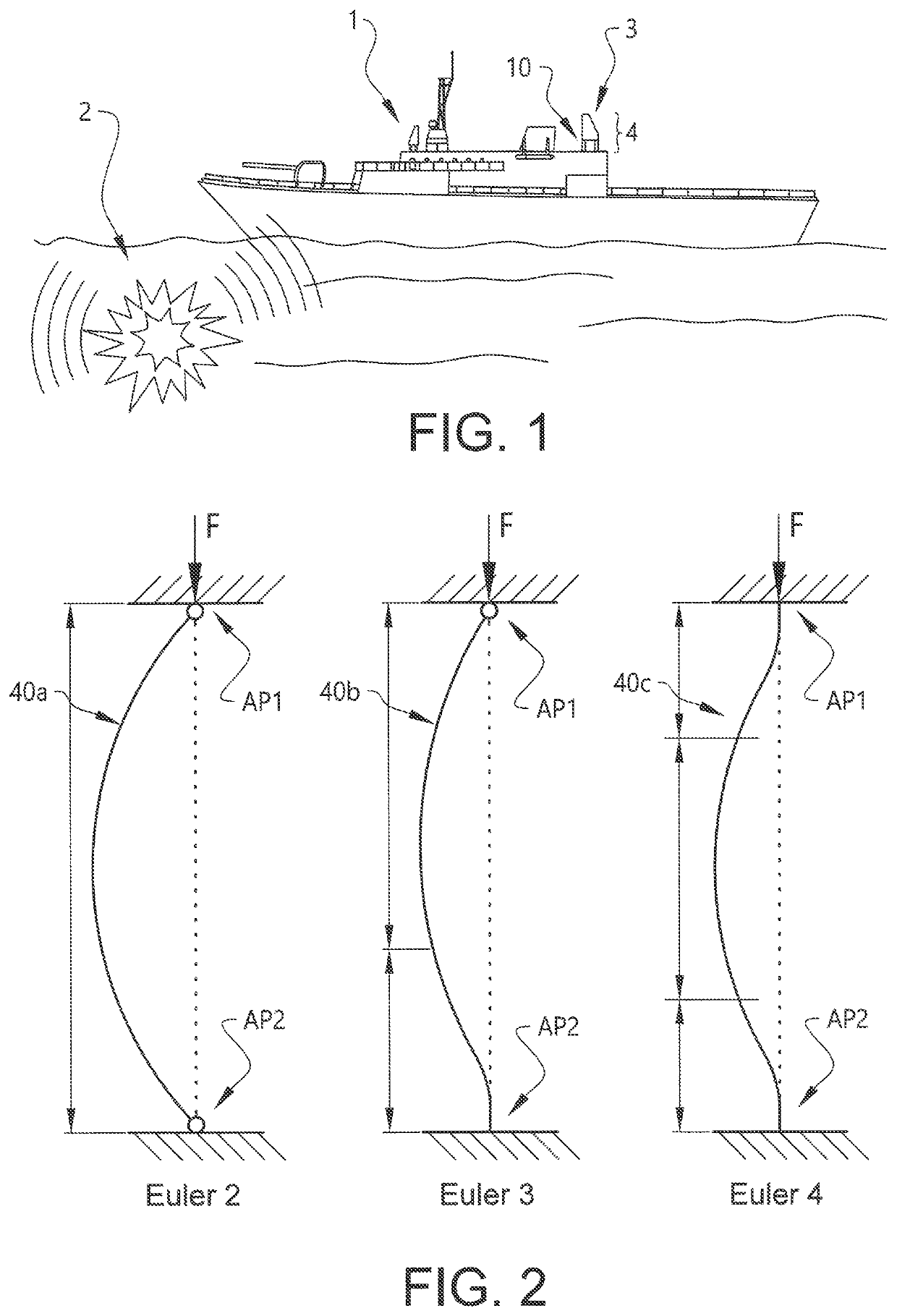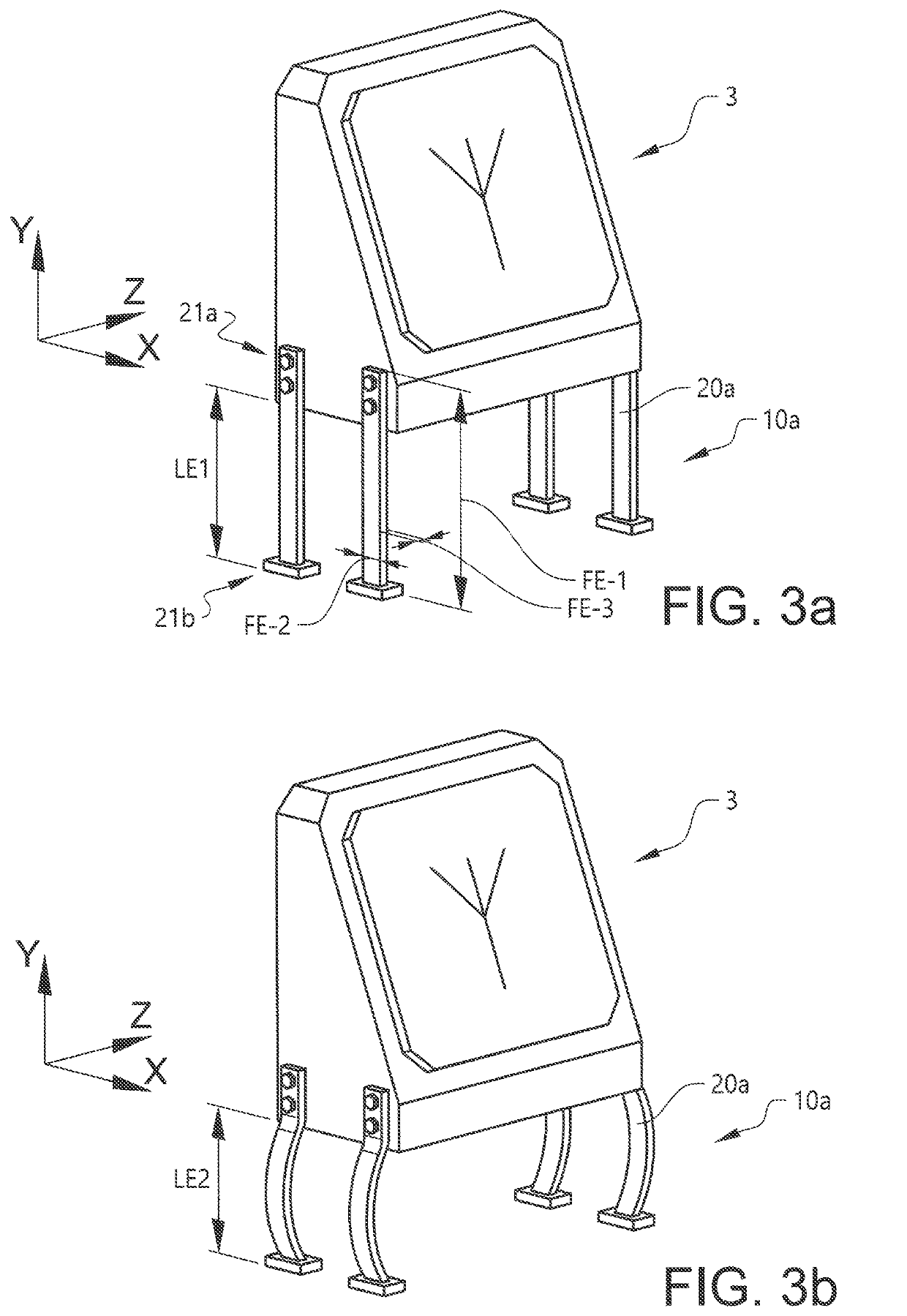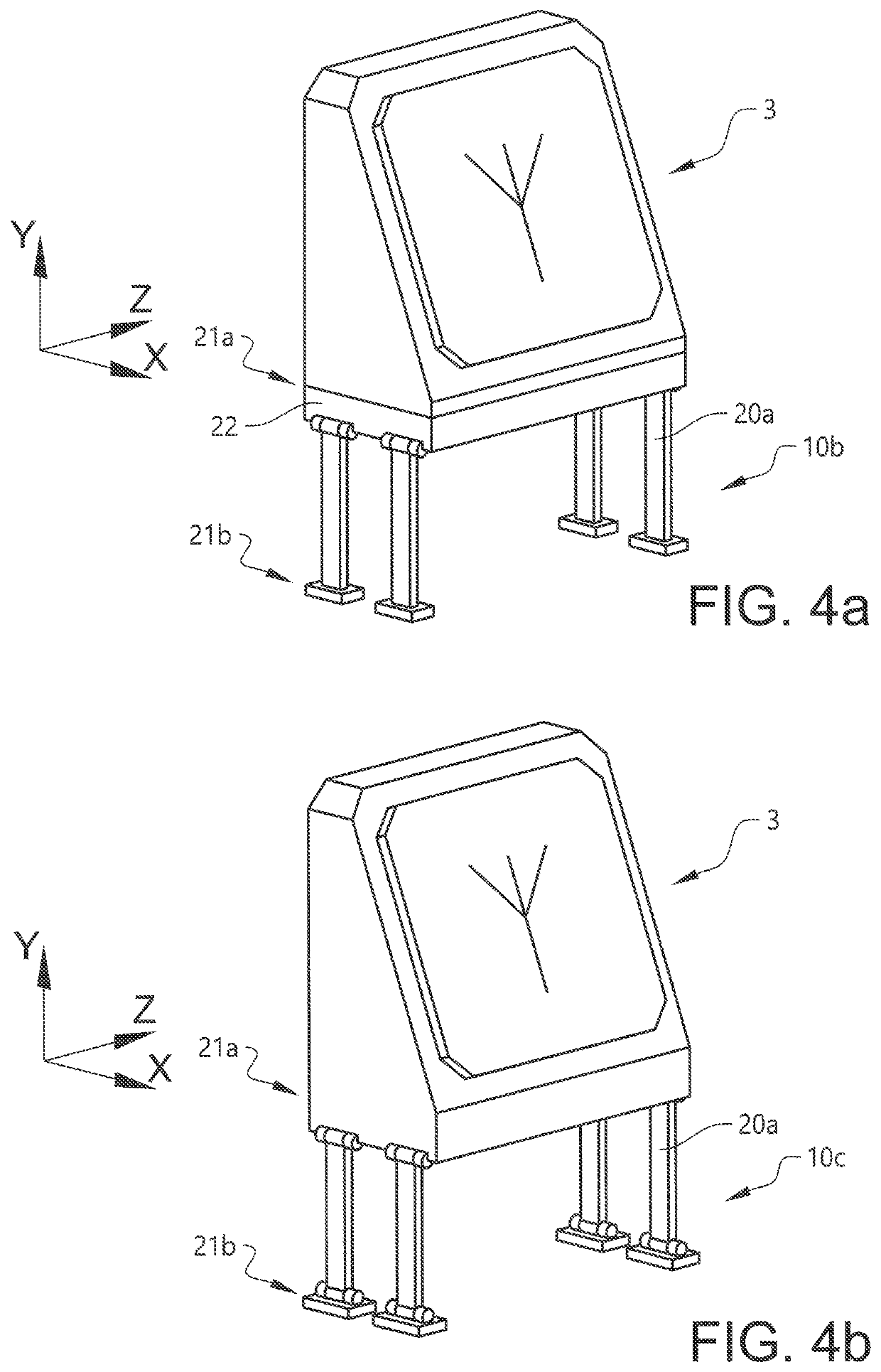Sensor fastener arrangement
a technology of fastener and sensor, which is applied in the direction of shock absorbers, vessel construction, wind-induced force reduction, etc., can solve the problems of less useful information, significant error, and useless measurement data, and achieve the effect of reducing the load required for further deformation and reducing the acceleration of the sensor device when the fastener elements reversibly deform
- Summary
- Abstract
- Description
- Claims
- Application Information
AI Technical Summary
Benefits of technology
Problems solved by technology
Method used
Image
Examples
Embodiment Construction
[0046]The following description of exemplary embodiments of the invention is presented only for purposes of illustration and should not be seen as limiting. The description is not intended to be exhaustive and modifications and variations are possible in the light of the teachings herein, or may be acquired from practice of various alternative embodiments of the invention. The exemplary embodiments discussed herein were chosen and described in order to explain the principles and the nature of various embodiments and its practical application to enable one skilled in the art to utilize the exemplary embodiments in various manners, and with various modifications, as are suited to the particular use contemplated. It should be appreciated that the aspects presented herein separately may be practiced in any combination with each other unless otherwise explicitly is stated.
[0047]FIG. 1 discloses a platform 1, in form of a ship, provided with a sensor device 3, in form of an antenna, arran...
PUM
 Login to View More
Login to View More Abstract
Description
Claims
Application Information
 Login to View More
Login to View More - R&D
- Intellectual Property
- Life Sciences
- Materials
- Tech Scout
- Unparalleled Data Quality
- Higher Quality Content
- 60% Fewer Hallucinations
Browse by: Latest US Patents, China's latest patents, Technical Efficacy Thesaurus, Application Domain, Technology Topic, Popular Technical Reports.
© 2025 PatSnap. All rights reserved.Legal|Privacy policy|Modern Slavery Act Transparency Statement|Sitemap|About US| Contact US: help@patsnap.com



